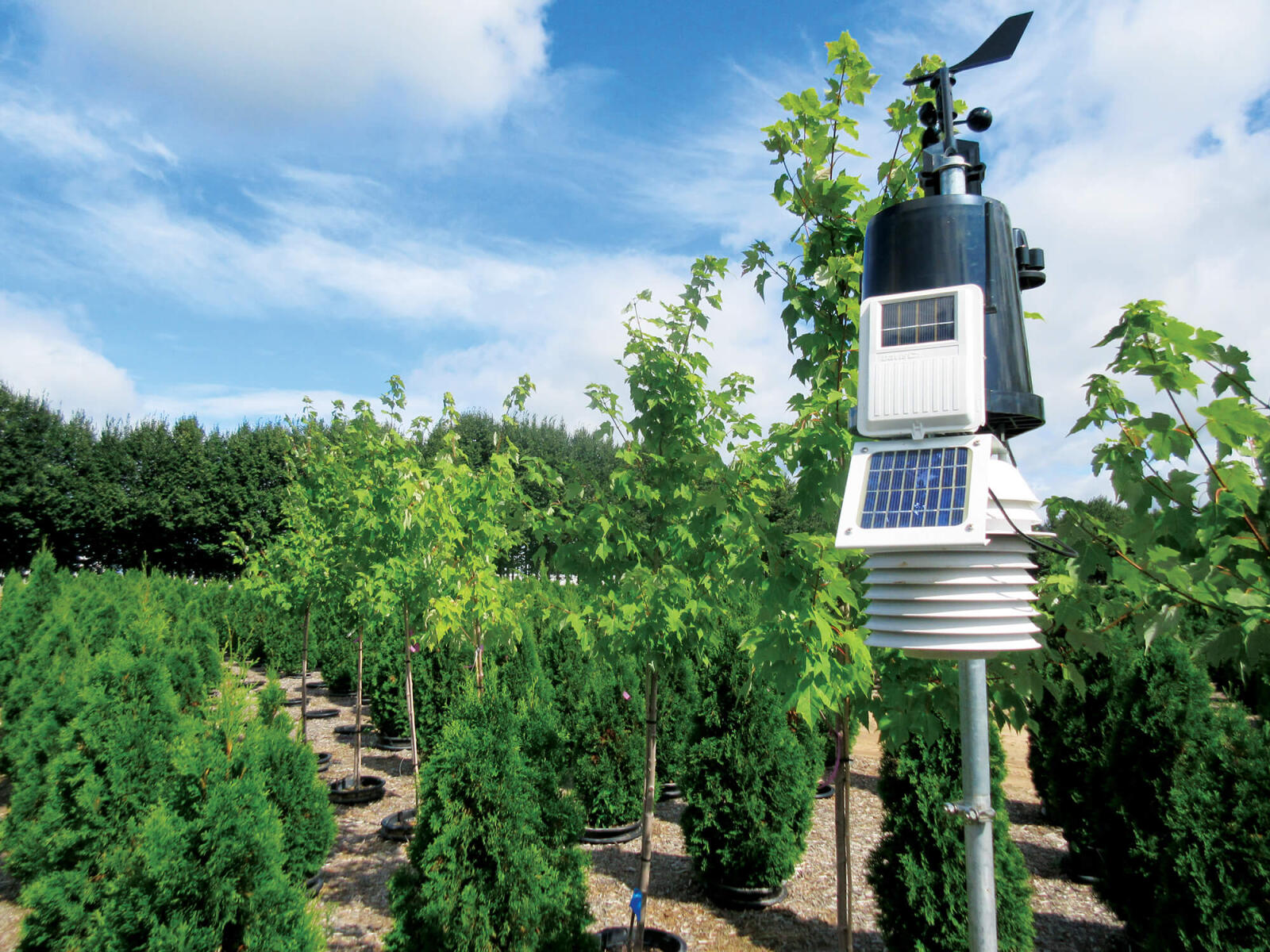January 1, 2016

While it is not practical for growers to install and monitor stem psychrometer sensors, research will determine species-specific coefficients that can be used with a weather station for field applications.
Pared-down irrigation
Scheduling based on humidity and plant requirements allows dramatically lower nursery drip irrigation rates
BY NEWTON TRAN AND JARED STOOCHNOFF
The horticultural nursery industry continuously strives to improve management practices; this is especially true with irrigation. Many nurseries have converted from overhead to drip irrigation management in an attempt to have more control over their water consumption. Drip irrigation can dramatically reduce water consumption, provided nurseries have optimal scheduling (frequency, duration, timing). Drip irrigation schedules are typically subjective and largely based on the grower’s experience. Research conducted by the University of Guelph has revealed that conventional drip irrigation schedules, determined by the nursery growers, excessively irrigate plants. Excessive irrigation schedules arise from the fact that nursery managers have no reliable method to determine the plants’ actual water requirement.
To target this problem and improve the reliability of irrigation scheduling, researchers at the University of Guelph, funded and supported by Landscape Ontario and the Canadian Nursery Landscape Association, have attempted to establish an irrigation schedule that is triggered by the relationship between plant water stress and environmental conditions, specifically humidity, to ensure irrigation events are based on plant water requirements. Ongoing research conducted at Connon Nurseries C.B. Vanderkruk Holdings for the past two years have used an innovative stem psychrometer sensor to determine the plants’ water requirements and how they vary depending on species-specific traits, soil properties, and environmental conditions.
This research has demonstrated a strong linear relationship between plant water stress and environmental conditions, indicating that plant water stress can be reliably predicted based on conventional environmental variables. Extending from this, new irrigation schedules can be developed to significantly help reduce water consumption, without affecting total growth. In several trials, optimal irrigation schedules dictated by on-site weather station data applied only 25 per cent of the volume typically applied by the nursery, but achieved the same result in height and caliper measurements.
Stem psychrometer sensor technology is unsuitable for industry distribution due to complex operating procedures. In order to ensure efficient technology transfer, irrigation scheduling must be based on simple and affordable technology that can be easily adopted by the growers themselves. The end goal of this research is to create species-specific irrigation schedules dictated by small, off-the-shelf, on-site weather stations to approximate the plants’ water requirements.
The frequency, duration, and timing of irrigation events (initially dictated by the psychrometer data) was converted into weather station magnitudes. These new irrigation schedules approximated plant water requirements based on weather station data and the species-specific linear relationship coefficient.
Future research will determine the magnitude of the coefficient relating stem psychrometer measurements and humidity measurements to create optimal irrigation schedules for many economically important nursery species. This will allow irrigation managers to approximate plant water requirements for many different species, based on a single weather station measurement. In order to implement these conservative drip irrigation schedules in your nursery, all you will require is the ability to monitor relative humidity and our relationship coefficient. This research will lead to the production of a simple weather station, or a weather station add-on, that accumulates relative humidity data and then wirelessly transmits instructions to a remotely controlled irrigation valve. This will ensure reliable irrigation based on approximate water requirements, as opposed to subjective schedules. This technique will significantly reduce water consumption, nutrient run-off and irrigation water costs. Linking irrigation scheduling to the actual physiological requirements of the crop will reduce the impacts of nursery production, and reduce overhead costs.
Newton Tran and Jared Stoochnoff are graduate students from the University of Guelph, advised by Dr. Michael A. Dixon.